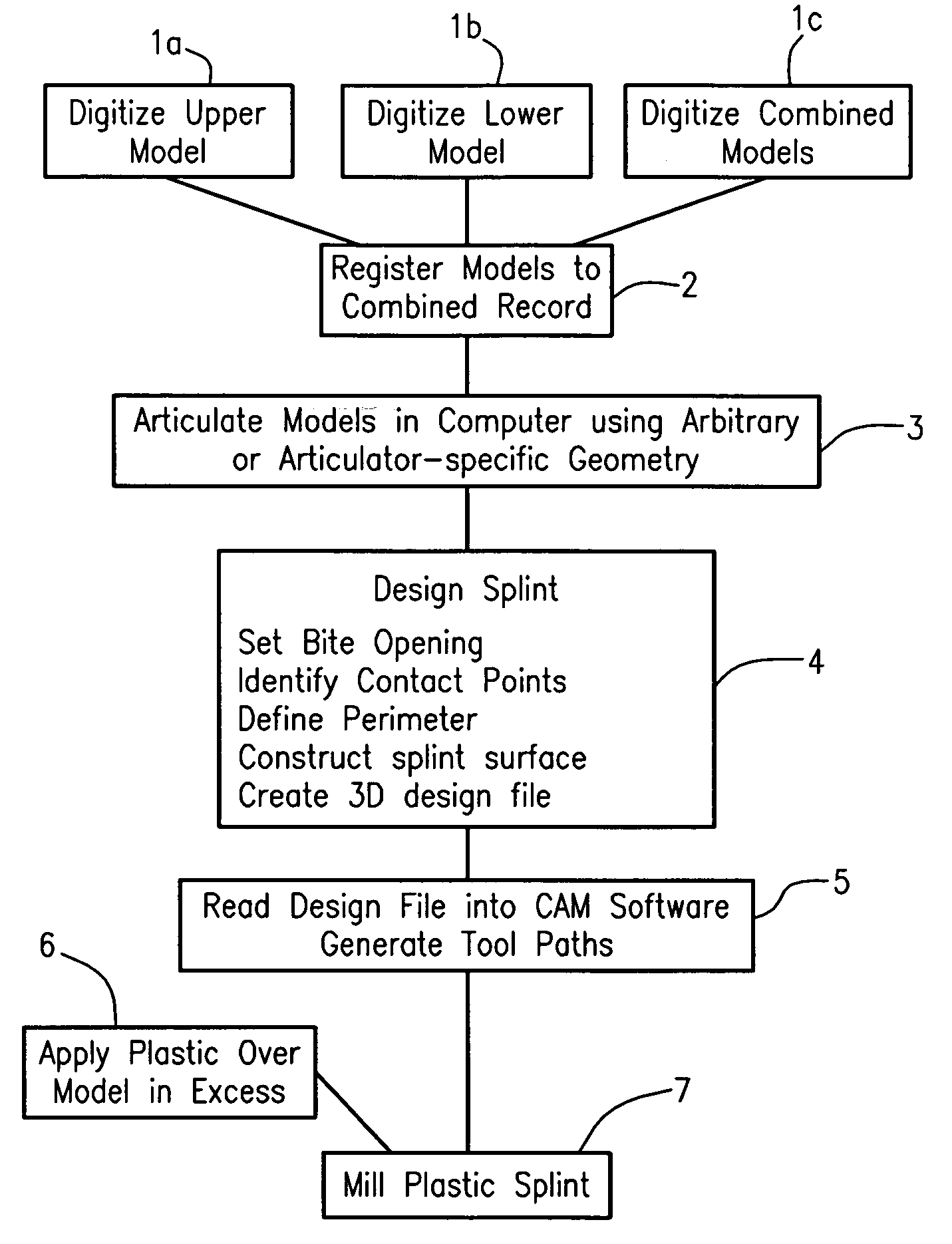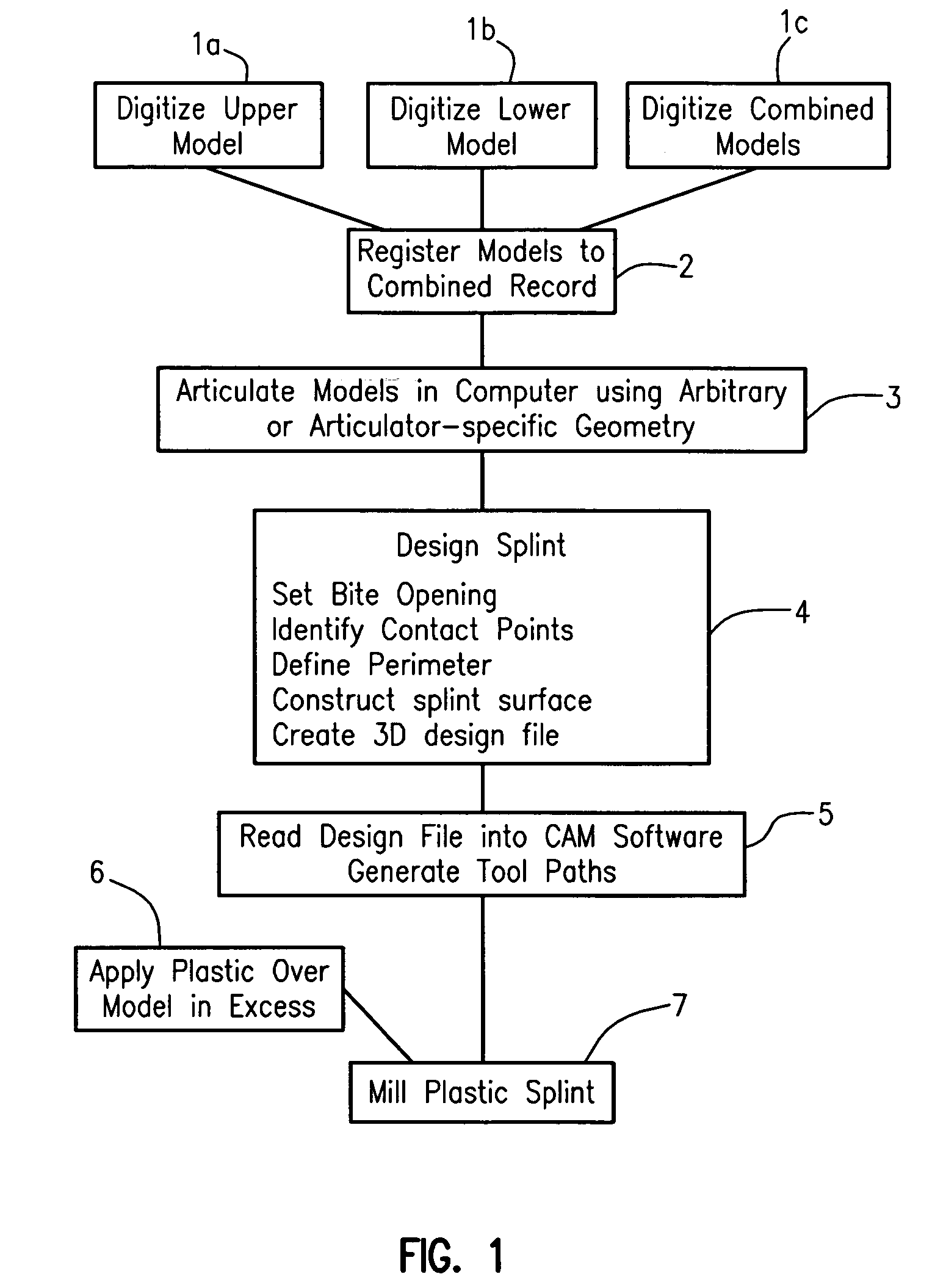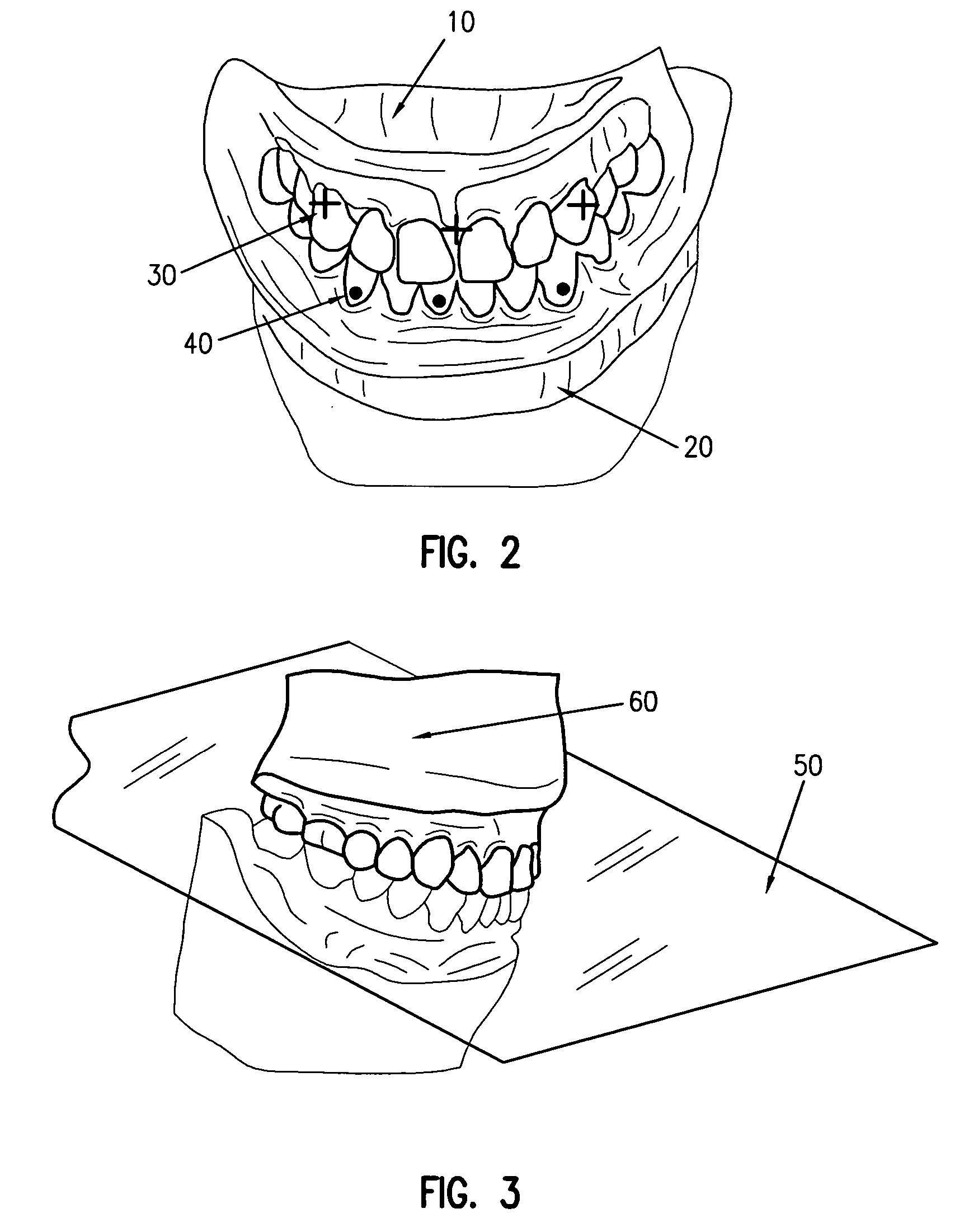Digital manufacturing of removable oral appliances
a technology of oral appliance and digital manufacturing, applied in the field of dental appliances, can solve the problems of increasing trimming requirements, requiring less time and skill, etc., and achieve the effects of enhancing design, reducing trimming time, and improving design uniformity and final shap
- Summary
- Abstract
- Description
- Claims
- Application Information
AI Technical Summary
Benefits of technology
Problems solved by technology
Method used
Image
Examples
Embodiment Construction
[0039] While the basic method described in the foregoing Summary of is applicable to a variety of removable appliance types, details of modeling the dentition, appliance design, and appliance production are described using an occlusal splint as an example. The process for producing an occlusal splint is summarized in FIG. 1. Digital 3D files of the upper, lower and combined models are designated 1a, 1b and 1c in FIG. 1. Registration of the individual upper 1a and lower 1b models to the combination scan 1c is represented at 2. The first step in appliance design, articulation, is shown at 3, and the design process is shown at 4. Appliance production includes generating tool paths 5, applying plastic 6 and milling 7.
[0040] Turning first to modeling the dentition, several methods are known in the art for creating a 3D representation of dental anatomy in a computer with sufficient detail to carry out this invention. A preferred method for obtaining a 3D representation of (digitizing) a ...
PUM
 Login to View More
Login to View More Abstract
Description
Claims
Application Information
 Login to View More
Login to View More - R&D
- Intellectual Property
- Life Sciences
- Materials
- Tech Scout
- Unparalleled Data Quality
- Higher Quality Content
- 60% Fewer Hallucinations
Browse by: Latest US Patents, China's latest patents, Technical Efficacy Thesaurus, Application Domain, Technology Topic, Popular Technical Reports.
© 2025 PatSnap. All rights reserved.Legal|Privacy policy|Modern Slavery Act Transparency Statement|Sitemap|About US| Contact US: help@patsnap.com



